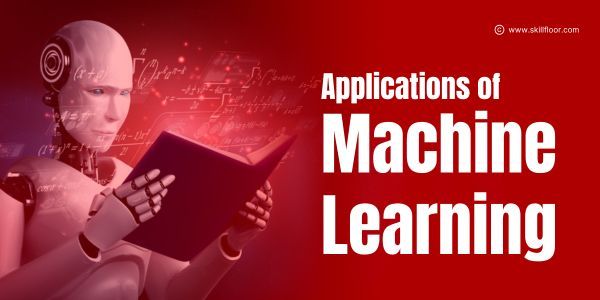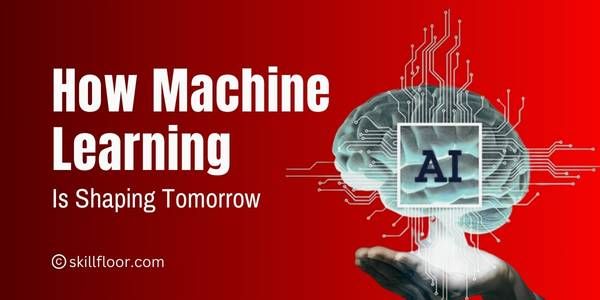Unleashing Data Power: A Guide to ML Preprocessing
Discover the essential techniques of data preprocessing in machine learning. Maximize your model's potential with expert guidance

Welcome, data enthusiasts! In the world of machine learning, the journey to creating powerful models begins with data preprocessing. Before we dive into the exciting world of algorithms and models, we must ensure that our data is clean, organized, and ready for analysis. This is where data preprocessing comes into play. In this friendly guide, we'll explore the importance of data preprocessing and learn some essential techniques to unleash the true potential of our data.
1. Understanding Data Preprocessing
Data preprocessing is like preparing a canvas before painting a masterpiece. It involves transforming raw, messy data into a clean and structured format suitable for machine learning algorithms. By removing inconsistencies, handling missing values, and standardizing variables, we can improve the accuracy and reliability of our models. Data preprocessing lays the foundation for successful machine learning by addressing common data issues and preparing it for analysis
2. Dealing with Missing Values
Dealing with missing values is like solving a puzzle with a few missing pieces. It's a common challenge we encounter when working with real-world data. Missing values can wreak havoc on our analysis and machine learning models if not properly addressed. But fear not, for there are friendly techniques to handle these gaps in our data!
First, let's understand why missing values occur. They can arise due to various reasons, such as data entry errors, sensor malfunctions, or simply the absence of information. Regardless of the cause, we need to handle them to ensure our analysis is accurate and reliable.
One popular technique for dealing with missing values is called imputation. Imputation helps us fill in the missing values based on patterns in the dataset. There are several approaches to imputation, and the choice depends on the nature of the data and the missing value patterns.
One simple imputation method is mean imputation, where we replace missing values with the mean of the available values in that column. This approach assumes that the missing values are roughly similar to the observed values on average. Another option is median imputation, which replaces missing values with the median value instead of the mean. This method is more robust to outliers and works well for skewed distributions.
For categorical variables, we can use mode imputation. Here, missing values are replaced with the most frequent category in that column. This approach works when the mode adequately represents the missing values.
Alternatively, we can use more advanced imputation techniques like regression imputation, where missing values are estimated based on the relationship with other variables. This method leverages the available data to predict missing values using regression models.
It's important to remember that imputation introduces some level of uncertainty, as we're essentially making educated guesses about the missing values. Therefore, it's crucial to evaluate the impact of imputation on our analysis and models.
In some cases, instead of imputing missing values, we may choose to remove rows or columns with missing values. This approach, known as complete case analysis or listwise deletion, can be effective if the missing values are limited and do not significantly impact the overall dataset's integrity
3. Handling Categorical Variables
Categorical variables, like colors or labels, add diversity and richness to our datasets. However, they pose a challenge for machine learning algorithms that typically work with numerical data. Data preprocessing allows us to encode categorical variables into numerical representations through techniques like one-hot encoding or label encoding. This transformation enables algorithms to understand and utilize the information present in categorical variables effectively.
4. Feature Scaling and Normalization
Imagine comparing the heights of two people, one measured in inches and the other in centimeters. The difference in units can skew our analysis. Feature scaling and normalization in data preprocessing address this issue by ensuring that all features are on a similar scale. Techniques like standardization and min-max scaling adjust the range and distribution of features, allowing algorithms to make fair comparisons and prevent dominant features from overshadowing others.
5. Outlier Detection and Removal
Outliers are like rebels in our data, disrupting the patterns and influencing our models' performance. Data preprocessing techniques, such as outlier detection and removal, help us identify and handle these mischievous data points. By detecting outliers and either removing them or transforming them to be less influential, we can create more robust and accurate models that are less prone to the anomalies present in the data.
6. Dimensionality Reduction
In many real-world datasets, we encounter high-dimensional data with numerous features. This can lead to computational inefficiency and the "curse of dimensionality." Data preprocessing techniques such as feature selection and dimensionality reduction, like Principal Component Analysis (PCA), help us reduce the number of features while preserving the most relevant information. By eliminating redundant or less important features, we simplify our data representation and improve the performance of our machine learning models.
7. Handling Imbalanced Datasets
In some cases, our datasets may have imbalanced class distributions, where one class significantly outweighs the others. This can lead to biased models that prioritize the majority class. Data preprocessing techniques like oversampling, undersampling, or using advanced methods like Synthetic Minority Over-sampling Technique (SMOTE) address this issue by balancing the class distribution. By ensuring each class is adequately represented, we improve the accuracy and fairness of our models.
8. Data Transformation and Scaling
Sometimes, the relationship between variables in our dataset may not follow a linear pattern. In such cases, applying mathematical transformations, like logarithmic or exponential transformations, can help align the data with the assumptions of our machine learning algorithms. Additionally, certain algorithms, such as neural networks, benefit from data scaling to ensure features have similar ranges. Data preprocessing techniques like normalization or logarithmic scaling can make our data more suitable for specific algorithms and improve model performance.
9. Handling Noisy Data
Real-world datasets are prone to noise, which can arise from measurement errors, data collection issues, or other sources. Noise can distort our models' performance and lead to incorrect predictions. Data preprocessing techniques, such as smoothing, filtering, or outlier detection, help us identify and mitigate the effects of noise. By removing or minimizing the impact of noisy data, we ensure our models are more robust and reliable.
10. Iterative Process and Evaluation
Data preprocessing is an iterative process that requires constant evaluation. As we preprocess our data and build models, we must assess the impact of each preprocessing step on the model's performance. It's crucial to evaluate the results and analyze whether the preprocessing techniques employed have improved the model's accuracy, precision, recall, or other relevant metrics. By continually refining our preprocessing techniques and assessing their impact, we can optimize our models for better performance.
Data preprocessing is the secret ingredient that unlocks the true potential of our data in machine learning. By cleaning, transforming, and organizing our data, we ensure that our models are built on a solid foundation. Through handling missing values, encoding categorical variables, scaling features, and addressing outliers, we create a cleaner and more reliable dataset for our algorithms to work with.


























































